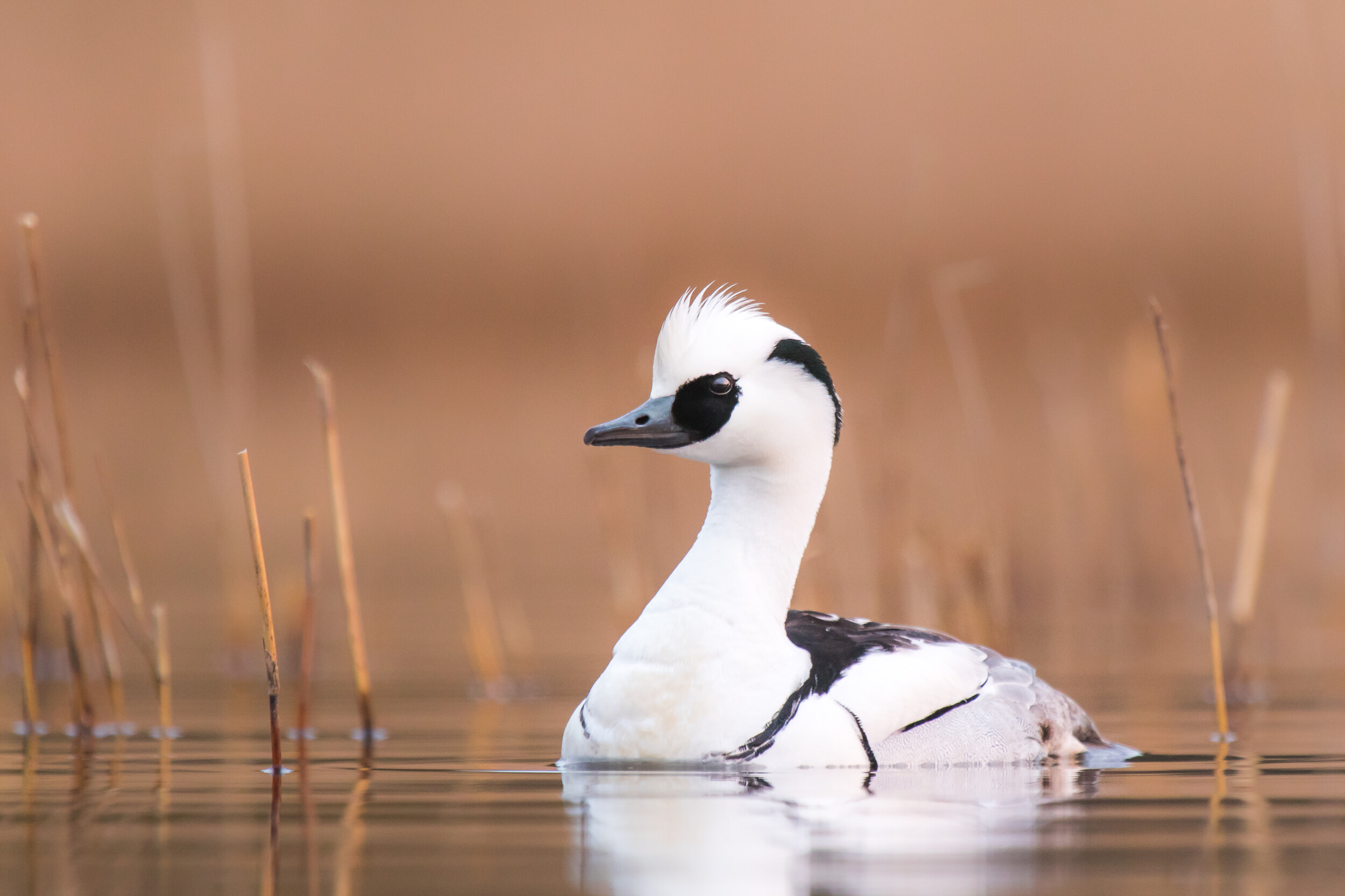Smew
Smew. Photo: Karl Jakob Toplaan
Introduction
Latin Mergus albellus
Estonian Väikekoskel
Also known as: weasel coot, white nun
Status in Estonia
Migratory and wintering bird.
Description
The smew is a small and stocky merganser. The male bird in definitive plumage is bright white with black areas. The head is white, with a black ‘eye mask’ and a black stripe or spot on the nape and sides of the neck and there is a big white oval on the lesser coverts. The female bird is dirty-brownish grey with white cheeks, a dark red-brown forehead and crown and a black lore from autumn to spring, which becomes browner during breeding. The male bird in eclipse plumage resembles the female bird in summer, but with a prominent white patch on the lesser coverts, and the back is darker. The juveniles are fairly similar to the females, except that the belly is significantly less white.
Size
Body length 38–44 cm, wingspan 56–69 cm, body mass 450–650 g.

Smew (female). Photo: Kauro Kuik
Similar species
Common goldeneye, goosander, red-breasted merganser.
Distribution
It breeds in the northern regions of the Eurasian taiga zone. It winters along the Baltic and Black seas and extends as far as England. The smew is an uncommon migratory and a rare wintering bird in Estonia.
Population
It does not breed in Estonia and is an uncommon migrant.
Occurrence in Estonia
It migrates from March to May and in October; winter populations range from 1000–3000.
Diet
It feeds mainly on fish and insect larvae.
Habitat
It breeds around lakes with clear water and slow currents.
Nesting
The nest is inside a tree hollow or nest box. The female lays 7–11 eggs in May and incubates them for 26–28 days. The chicks are nidifugous, leaving the nest shortly after hatching and becoming capable of flight at around 10 weeks of age.
Conservation status and protection
It belongs to the protected species of category II.
Distribution and population in Lääne County.
The smew is an uncommon migratory and wintering bird in Lääne County. The majority of spring migration occurs between mid-March and early May, followed by autumn migration in October and November. Smews who rest on their journey prefer to feed in inner bays and, to some extent, bigger lakes. In Matsalu, the smew is most likely to be seen from the Haeska or Keemu birdwatching towers. They are also visible from the Haapsalu Promenade and the Saunja Bay observation towers. The majority of wintering smew are found along the northern coast of Vormsi.
